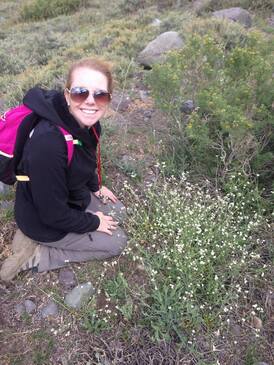BORAGES . . .Cryptantha as a model system for the study of phenotypic evolution
Commonly known as "cat's eye" or the "popcorn flower," the genus Cryptantha (Boraginaceae, the forget-me-not family), exhibits remarkably similar floral components, often leading to misidentifications in the field and phylogenetic discrepancies. However, a suite of characters makes Cryptantha an appealing model system for the study of phenotypic evolution, including the evolution of novel traits following long-distance dispersal and adaptation to extreme environments. |
. . . AND BRASSICAS
|
The phenomenon of feral crops, that is, free-living populations that have established outside cultivation, is understudied. One example of this is "wild" cabbage (Brassica oleracea). This feral plant has established a global presence, from England to Chile, New Zealand, France, Portugal, and the United States.
Given the widespread distribution of these "wild" cabbages, feral B. oleracea serves as an ideal candidate for testing various hypotheses related to parallel evolution and feralization. Understanding the intricacies of feralization, particularly in the context of crop species like B. oleracea, holds significant implications for reimagining innovative strategies aimed at ensuring future food security. |














